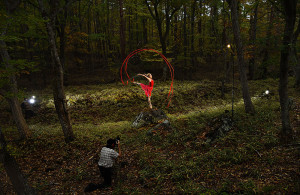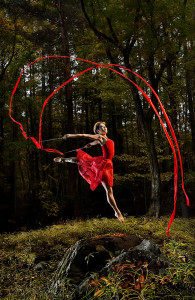2017 March WATR, Your Questions & My Answers
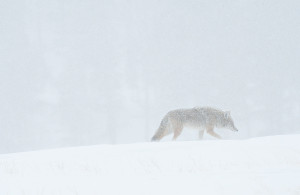 Hi and welcome to the March edition of my Instructional Blog: Workshop at the Ranch (WATR)
Hi and welcome to the March edition of my Instructional Blog: Workshop at the Ranch (WATR)
Dozens of questions arrived via email through my website Contact Dave page https://daveblackphotography.com/contact-dave/
So, without delay, here are Your Questions and My Answers.![]()
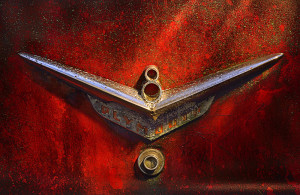 Join Me and Learn! … 2017 Workshops Calendar website page:
Join Me and Learn! … 2017 Workshops Calendar website page:
NEW: April 3, 2017 … Nikon School: Lightpainting at Old Car City in Atlanta, GA. This will be a Step-by-Step Instructional session and also a “Hands-On” Lightpainting Session on location at Old Car City in Atlanta, GA.
Please check out all my Workshop listings for 2017: https://daveblackphotography.com/upcoming-workshops/
![]()
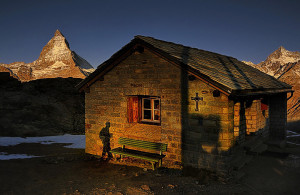 Image 1 “Alpine Shadow” … Nikon D3s, ISO1000, 1/500 at f14, Nikon 24-70mm lens, SanDisk 32G Extreme Pro Flash Card.
Image 1 “Alpine Shadow” … Nikon D3s, ISO1000, 1/500 at f14, Nikon 24-70mm lens, SanDisk 32G Extreme Pro Flash Card.
Q… Hi Mr. Black, Greetings from Switzerland. I really enjoy your Instagram pictures/mini photo lessons each day, and in particular the Alpine Shadow picture from Switzerland: https://www.instagram.com/p/BQiTAv6DOn3/?taken-by=daveblackphoto Please can you elaborate with some backstory? Kind Regards. Francois – Zermatt, Switzerland
A… Hi Francois. So glad that you are enjoying my Instagram posts @daveblackphoto and the mini photo lessons that often accompany each IG picture.
As mentioned in the IG post, Rotenboden Station is a familiar location for those who are climbing, hiking or photographing the alpine sunrise at the Matterhorn in Switzerland.
The “backstory” is an exercise in patience. I had completed making my sunrise image of the Matterhorn from a location about 1 kilometer away from the Rotenboden Station and had just hiked back to the alpine railway station.
While I was waiting for the train to return and continue my journey up the mountains the sunlight and shadows on the station were beautiful and seemed to be begging for a human element to enter the scene.
The train arrived and I let it go without me, then, after about 15 minutes the shadow moved to reveal the cross and a minute later a fellow hiker (with backpack) approached the railway platform and his shadow was cast onto the station wall … thus offering a “different” image of the Matterhorn.
We often go out “looking” for a picture, but we must always be aware of the changing light and shadows around us … and be ready to capture a “moment” when it happens along.
Thanks for your question Francois, hope the backstory is helpful. Cheers. Dave![]()
Image 2
Image 3
“Red Rythmic” … Nikon D5, ISO4000, 1/800 at f13, Nikon 24-70mm lens at 45mm, WB 6250K, 4 NEW Nikon SB-5000 Speedlights with Radio Control, Manfroto Lightstands, XQD Card
Q…Hi, Dave ! I always checkout your 3 portfolios on your website to see what’s new. Thanks for adding new pics each month. Can you explain where you placed your Speedlights for the Red Rythmic gymnastics image in your Creative Lighting Portfolio on your website? https://daveblackphotography.com/creative-lighting-portfolio/
Thanks. Kevin – London.
A…Hi Kevin. Glad you are enjoying my portfolios, I really enjoy adding new images each month to the 3 collections.
I purposely underexposed the scene by -2.0 stops and then illuminated my subject with FLASH. I used 4 NEW Nikon SB-5000 Speedlights with Radio Control, all of which were shot in High Speed Sync.
The main SB-5000 had a Grid to help spotlight my athlete and was set to FULL power and placed high on a lightstand 15 feet away.
I placed a second SB-5000 on a small rock about 20 feet out in front of the athlete and about 1 foot above the ground cover. This SB-5000 was set to 1/2 power and illuminated the foreground vegetation and the tail ends of the red ribbons.
Because of the uneven terrain I had an assistant hand hold 2 SB-5000 Speedlights about 35 feet behind the subject. These 2 Speedlights, each set to FULL power illuminated some of the vegetation behind her, but not the forest background which I wanted to remain dark.
The subject was an Olympian athlete who was amazing to work with. She performed multiple leaps on the boulder despite it being a very cold early morning shoot in the Yamanashi Forest of Northern Japan.
Thanks for a great question Kevin. Cheers. Dave![]()
 Image 4 “Winter Coyote” … Nikon D500, ISO2000, 1/1000 at f8, Nikon 200-500mm G VR lens (at 500mm) with Nikon TC 14E III 1.4x teleconverter, SanDisk 32G Extreme Pro SD Card.
Image 4 “Winter Coyote” … Nikon D500, ISO2000, 1/1000 at f8, Nikon 200-500mm G VR lens (at 500mm) with Nikon TC 14E III 1.4x teleconverter, SanDisk 32G Extreme Pro SD Card.
Q … Dear Dave, I’m a longtime fan and very much looking forward to attending your classes at Photoshop World in Orlando this April. I just love the Winter Coyote picture in your website Planet Portfolio https://daveblackphotography.com/planet-portfolio-images/
Can you tell me the how you captured this picture. Thank you. Debbie – Jacksonville, FLA.
A … Hi Debbie. Gad you like the “Winter Coyote”, and please come up and say “hello” during PSW Orlando. Your question fits into one of my favorite classes at PSW 2017: “THINK Before You Press the Shutter” … a class teaching “Previsualization”
PSW 2017 Orlando: https://www.eventbrite.com/e/photoshop-world-conference-2017-registration-27735841649?aff=DaveBlack
This image was made recently when I joined good friends Keith Ladzinski and Doug Ladzinski for a fun photo safari on a snowy January day in Rocky Mountain National Park.
We had been slowly cruising around the Park photographing Elk when Doug saw 4 Coyotes way off in the distance braving the winter storm on a small ridge about 150 yards from the road. With the snow storm and the long distance to the Coyotes I sensed this could be an opportunity for a very special picture.
Let me emphasis that before I stepped out of the vehicle I set the in-camera Set Picture Control menu of the D500 to Standard and also reduced the Contrast and Saturation levels slightly … then I increased the Clarity level to help define the snow flakes and Coyote.
I kept my distance on purpose as I wanted to shoot through more volume of the falling snow. The camera-lens combination of the Nikon D500 cropped sensor and 200-500mm f5.6 lens (at 500mm) plus I used a 1.4x teleconverter gave me a visual lens length of about 1,050mm.
All these preparations: 1,050mm, Set Picture Control adjustments and keep my distance from the Coyotes in order to shoot through as much falling snow as possible, but still see my subject clearly … were “Previsualized” in my mind in just a few seconds … THEN I stepped out of the vehicle onto the snow.
I used Manual exposure and chose to nearly overexpose the snow, but not quite. Once this single Coyote moved away from the pack and ventured out onto the ridge with the falling snow and head-down posture, the “click” of the shutter was all that was left to do … Voila! … “Winter Coyote”
This process of creating the scene and technical scenario in my mind first is called “Previsualization” and is what I believe to be the “Key” missing component for many photographers trying to make the memorable pictures they want.
Hope this answer is helpful and I look forward to meeting you at PSW.
Dave![]()
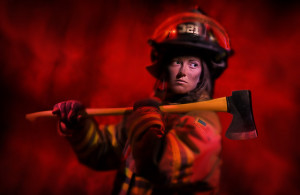 Image 5 “Fire Fighter” … Nikon D500, ISO200 at 30 seconds, Nikon 24-70mm lens, WB 10,000K, Manfrotto Tripod and 410 Geared Head … Lightpainting, SanDisk Extreme pro 32G Card.
Image 5 “Fire Fighter” … Nikon D500, ISO200 at 30 seconds, Nikon 24-70mm lens, WB 10,000K, Manfrotto Tripod and 410 Geared Head … Lightpainting, SanDisk Extreme pro 32G Card.
hey dave, love your light painting portraits. I read your instructional blog about “soft focus” technique for your portraits but I don’t get it??? can you explain it. thx. jeromy – chicago
Hi Jeromy. Your Question is a popular one … many photographers have asked how to do the “Soft Focus” technique for their Lightpaintings.
Whether you use Photoshop’s Gaussian Blur or my “Soft Focus” technique with camera and lens, the purpose is to create selected areas in the scene that are soft looking so as to draw attention more directly to the subject’s face which is in focus.
Here again is the breakdown of how I Lightpainted “Fire Fighter” …
This Lightpainting portrait of a female Fire Fighter makes use of a Manual exposure time of 30 seconds. I used 7 seconds to Lightpaint her face, helmet, ax and torso using a small white LED penlight.
For the next 12 seconds of exposure time I turned off my flashlight walked to the camera and Manually unfocused the lens to infinity and walked back to the subject to resume Lightpainting using a small red LED penlight to “SoftFocus” areas of her arms and helmet.
Finally, with about 11 seconds remaining in the 30 seconds exposure and with my lens still unfocused to infinity I Lightpainted the backdrop with red LED flashlight while the backdrop was being “fluttered” by an assistant, thus creating a “SoftFocus” & Motion Blur … I’m always experimenting.
Hope this answer explains “Soft Focus”.
Adios. Dave![]()
THANKS again to everyone who sent in a Question. FOLLOW me on Instagram @daveblackphoto for aditional mini-photo lessons and I’ll look to see many of you at Photoshop World 2017 in Orlando, Florida: April 19-20. https://www.eventbrite.com/e/photoshop-world-conference-2017-registration-27735841649?aff=DaveBlack
Adios. Dave


